Related Research Articles
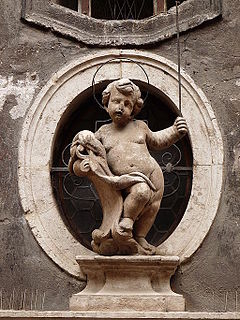
Blood libel or ritual murder libel is an antisemitic canard which falsely accuses Jews of murdering Christian boys in order to use their blood in the performance of religious rituals. Historically, echoing very old myths of secret cultic practices in many prehistoric societies, the claim as it is leveled against Jews, was rarely attested to in antiquity. It was however, frequently attached to early communities of Christians in the Roman Empire, reemerging as a Christian accusation against Jews in the medieval period. This libel—alongside those of well poisoning and host desecration—became a major theme of the persecution of Jews in Europe from that period to the present day.
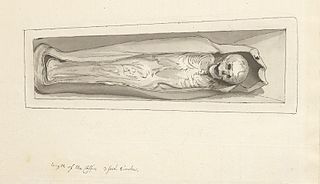
Hugh of Lincoln was an English boy whose death in Lincoln was falsely attributed to English Jews. He is sometimes known as Little Saint Hugh or Little Sir Hugh to distinguish him from the adult saint, Hugh of Lincoln. The boy Hugh was never formally canonised, so properly "Little Saint Hugh" is a misnomer.

William of Norwich was an English boy whose death was, at the time, attributed to the Jewish community of Norwich. It is the first known medieval accusation against Jews of ritual murder.

Nathan Marcus HaKohen Adler was the Orthodox Chief Rabbi of the British Empire from 1845 until his death.
Samuel ibn Naghrillah, also known as Samuel HaNagid, was a medieval Jewish Spanish Talmudic scholar, grammarian, philologist, soldier, merchant, politician, and an influential poet who lived in Iberia at the time of the Moorish rule. His poetry was one area through which he was well known. He was perhaps the most politically influential Jew in Muslim Spain.
Black Hebrew Israelites are groups of African Americans who believe that they are the descendants of the ancient Israelites. Some sub-groups believe that also Native and Latin Americans are descendants of the Israelites as well. Black Hebrew Israelites combine elements to their teaching from a wide range of sources: to varying degrees, Black Hebrew Israelites incorporate certain aspects of the religious beliefs and practices of both Christianity and Judaism, though they have created their own interpretation of the Bible, and other influences include Freemasonry and New Thought, for example. Many choose to identify as Hebrew Israelites or Black Hebrews rather than Jews in order to indicate their claimed historic connections.
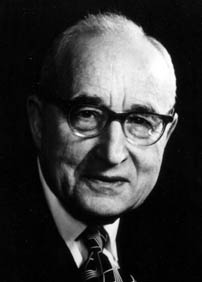
Jacob Rader Marcus was a scholar of Jewish history and a Reform rabbi.
The history of Jews in Australia traces the history of Australian Jews from the British settlement of Australia commencing in 1788. Though Europeans had visited Australia before 1788, there is no evidence of any Jewish sailors among the crew. The first Jews known to have come to Australia came as convicts transported to Botany Bay in 1788 aboard the First Fleet that established the first European settlement on the continent, on the site of present-day Sydney.
Thomas of Monmouth was a monk who lived at Norwich Cathedral Priory, a Benedictine monastery in Norwich, in Norfolk, England during the mid-twelfth century. He was the author of The Life and Miracles of St. William of Norwich, a hagiography of William of Norwich that is considered an antisemitic text.
William de Turbeville was a medieval Bishop of Norwich.
The history of Jews in Ohio dates back to 1817, when Joseph Jonas, a pioneer, came from England and made his home in Cincinnati. He drew after him a number of English Jews, who held Orthodox-style divine service for the first time in Ohio in 1819, and, as the community grew, organized themselves in 1824 into the first Jewish congregation of the Ohio Valley, the B'ne Israel. This English immigration was followed in the next two decades by the coming of German immigrants who, in contrast, were mostly Reform Jews. A Bavarian, Simson Thorman, settled in 1837 in Cleveland, then a considerable town, which thus became the second place in the state where Jews settled. Thorman was soon followed by countrymen of his, who in 1839 organized themselves into a congregation called the Israelitish Society. The same decade saw an influx of German Jews into Cincinnati, and these in 1841 founded the Bene Yeshurun congregation. To these two communities the Jewish history of Ohio was confined for the first half of the 19th century. In 1850 Ohio had six congregations: four in Cincinnati and two in Cleveland.

David de Sola Pool was the leading 20th-century Sephardic rabbi in the United States. A scholar, author, and civic leader, he was a world leader of Judaism.
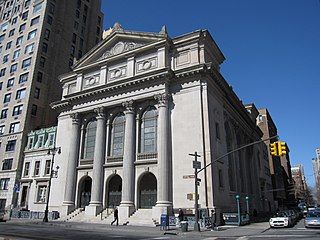
The Congregation Shearith Israel – often called The Spanish and Portuguese Synagogue – is the oldest Jewish congregation in the United States. It was established in 1654 in New Amsterdam by Jews who arrived from Dutch Brazil. Until 1825, when Jewish immigrants from Germany established a congregation, it was the only Jewish congregation in New York City.

Jewish views on slavery are varied both religiously and historically. Judaism's ancient and medieval religious texts contain numerous laws governing the ownership and treatment of slaves. Texts that contain such regulations include the Hebrew Bible, the Talmud, the 12th-century Mishneh Torah by rabbi Maimonides, and the 16th-century Shulchan Aruch by rabbi Yosef Karo. The original Israelite slavery laws found in the Hebrew Bible bear some resemblance to the 18th-century BCE slavery laws of Hammurabi. The regulations changed over time. The Hebrew Bible contained two sets of laws, one for Canaanite slaves, and a more lenient set of laws for Hebrew slaves. From the time of the Pentateuch, the laws designated for Canaanites were applied to all non-Hebrew slaves. The Talmud's slavery laws, which were established in the second through the fifth centuries CE, contain a single set of rules for all slaves, although there are a few exceptions where Hebrew slaves are treated differently from non-Hebrew slaves. The laws include punishment for slave owners that mistreat their slaves. In the modern era, when the abolitionist movement sought to outlaw slavery, some supporters of slavery used the laws to provide religious justification for the practice of slavery.
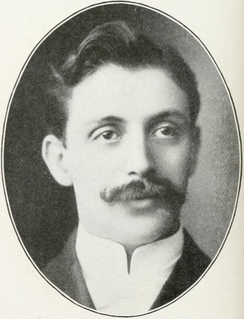
Leo Morris Franklin was an influential Reform rabbi from Detroit, who headed that city's Temple Beth El from 1899 to 1941.

Temple Beth El, also known as Temple Beth-El, is a Reform synagogue currently located in Bloomfield Township, Michigan, United States. Beth El was founded in 1850 in the city of Detroit, and is the oldest Jewish congregation in Michigan.

Saint Robert of Bury was an English boy, allegedly murdered and found in the town of Bury St Edmunds, Suffolk in 1181. His death, which occurred at a time of rising antisemitism, was blamed on local Jews. Though a hagiography of Robert was written, no copies are known, so the story of his life is now unknown beyond the few fragmentary references to it that survive. His cult continued until the English Reformation.
Samson of Tottington was an English Benedictine monk who became Abbot of Bury St. Edmunds. His life was later used by Thomas Carlyle as a leadership model in his book Past and Present.

Harold of Gloucester was a supposed child martyr who was falsely claimed by Benedictine monks to have been ritually murdered by Jews in Gloucester, England, in 1168. The claims arose in the aftermath of the circulation of the first blood libel myth following the unsolved murder of William of Norwich. A Christian cult and veneration of Harold was briefly promoted in Gloucester, but soon died out.
William of Canterbury was a medieval English monk and biographer of Thomas Becket, the Archbishop of Canterbury murdered in December 1170.
References
- ↑ Jacob R. Marcus (1938), The Jew in the Medieval World, Union of American Hebrew Congregations. Page 121.
- ↑ Jacob R. Marcus (1938), The Jew in the Medieval World, Union of American Hebrew Congregations. Page 122.
- ↑ Jacob R. Marcus (1938), The Jew in the Medieval World, Union of American Hebrew Congregations. Pages 121-125.
- ↑ Jacob R. Marcus (1938), The Jew in the Medieval World, Union of American Hebrew Congregations. Pages 125-126.
- ↑ Jacob R. Marcus (1938), The Jew in the Medieval World, Union of American Hebrew Congregations. Page 121.